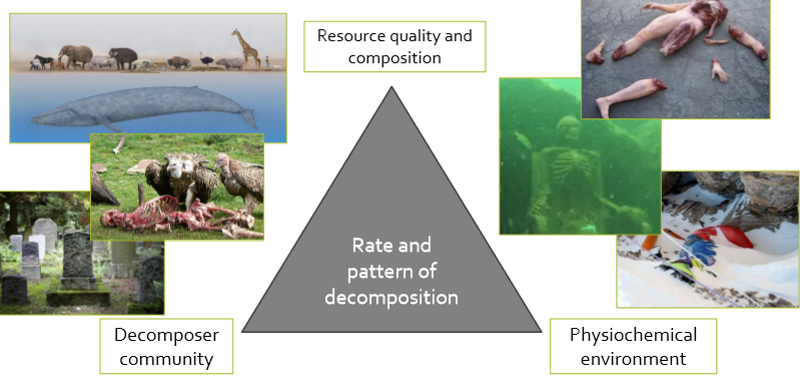PMI - late postmortem period and influencing factors
1/12
There's no tags or description
Looks like no tags are added yet.
Name | Mastery | Learn | Test | Matching | Spaced |
|---|
No study sessions yet.
13 Terms
What is decomposition
its a continuous process
starts from the moment of clinical death
dependent on many variables
Divide decomposition into 5 categories
fresh
bloat
active decay
advanced decay
skeletonisation
What happens during bloat stage
uncontrolled activity of internal bacteria
build up of gas and pressure in intestines and abdomen
discolouration
blisters, marbling
What happens during active decay
maggots hatch and destroy integrity of the body
bacterial action continues
temperature rises due to maggot mass - accelerates bacterial and enzymatic action
What happens during advanced decay
gases still released
decomposition fluids leach into surroundings
maggots retreat, beetles more active
bacterial action reduced
what happens during Skeletonisation
decomposition slows down
gradual exposure of the bones
some tendons and ligaments still visile
disarticulation
scavangers can take away small bones
What is important to keep in mind about the 5 stages?
decomposition is not always linear
dependent on intrinsic and extrinsic factors
stages can be extended, paused, overlapped or skipped
progression and sequence is always being researched
Explain influencing factors
The rate of decomposition = the speed at which a body transforms from a fresh whole body to complete skeletonisation
Combination of:
Extrinsic factors (external/environment)
Intrinsic factors (internal/individual)
What regulated decomposition?

Name extrinsic factors
temperature
access by instincts
moisture/ humidity/rainfall
sun/shade
coffins
submersion in water - decomposition rate slows by half in water
hanging above ground - maggots may fall off or be washed away by rain
Name intrinsic factors
body size, smaller = faster decomposition
clothing/covering
trauma - scents of blood attract insects quickly
burning
disease
drugs - morphine slows decomposition
What does ADD/ADH stand for?
accumulated degree days/hours
How is ADD/ADH calculated?
sum of daily temperature varations at the cs or recovery site
accumlation of thermal energy ( degrees Celsius) over time (days)
reflects cumulative heat exposure to the body
base temperature needs to be selected